If you’re planning a trip to Budapest and want a simple plan you can actually follow, this video will walk you through the best things to see and do in three days. Whether you’re visiting in autumn in Budapest Hungary, or any other season, this 3-day itinerary is clear, practical, and designed to help you enjoy the Budapest city experience without feeling overwhelmed. Consider it your easy travel guide to one of Europe’s most beautiful capitals. Let’s get started.
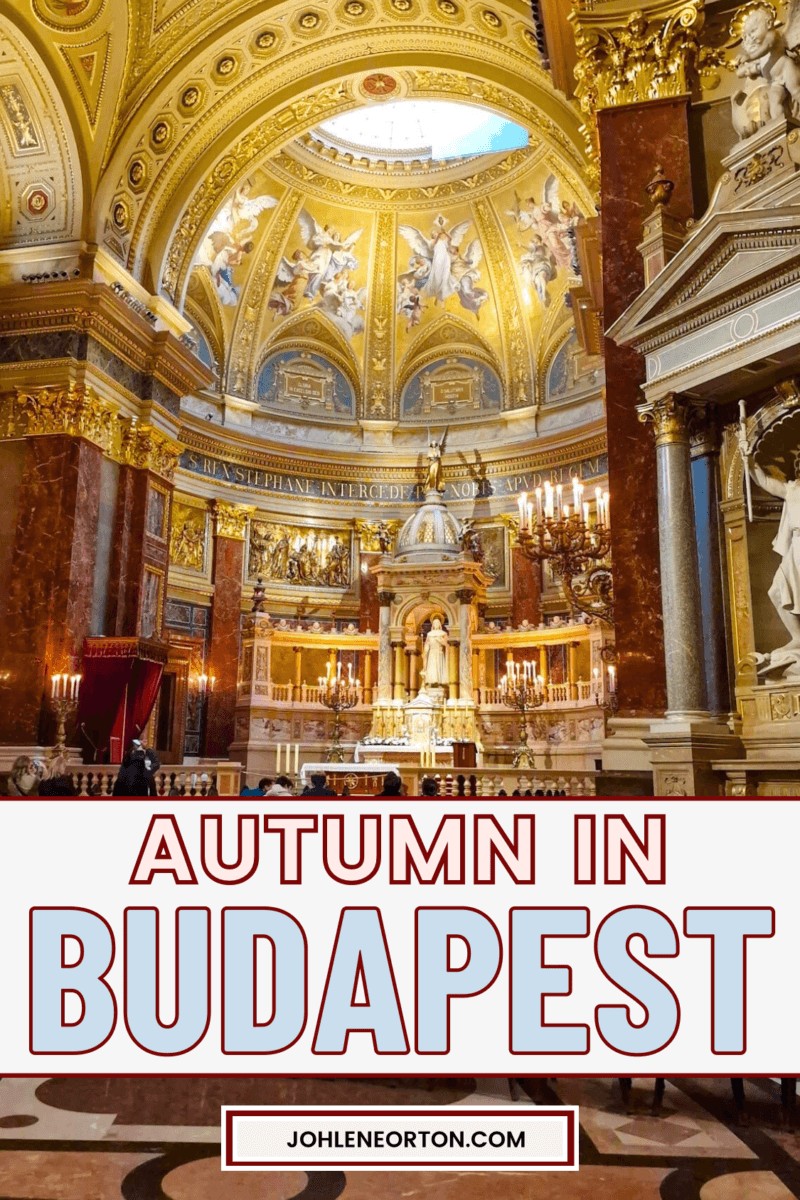
TABLE OF CONTENTS
- Understanding the City and Currency
- How to Get from Budapest Airport to City Center
- Budapest Public Transport Tips and Best Tram Routes
- Top Things to Do in Budapest: Attractions and Activities
- Best Restaurants and Food in Budapest
- 3-Day Itinerary
- Where to Stay in Budapest: Best Areas and Tips
- Best Hotels in Budapest – Where to Stay
- Is Budapest Worth Visiting?
1. Understanding the City and Currency
Budapest Hungary is actually two cities, Buda and Pest, separated by the Danube River and joined by several bridges, the most famous being the Chain Bridge. Buda is the hilly side, where you’ll find the Castle District next, Fisherman’s Bastion, and some of the best city views. Pest is flat and full of life, with shops, cafés, and landmarks like the Budapest Parliament and Basilica. The Chain Bridge was the first bridge to join them in the 1800s, bringing both sides together as one city: Budapest.
Budapest Districts
As for the city layout, Budapest is divided into 23 districts. The most important ones for us are District V (Belváros-Lipótváros), which is the city center on the Pest side and home to the Parliament, St. Stephen’s Basilica, and the river promenade. District VI (Terézváros) includes Andrássy Avenue, the Opera House, and designer shops. District VII (Erzsébetváros) is the Jewish Quarter: vibrant, full of bars, street art, and history. District I (Castle District) on the Buda side has the Fisherman’s Bastion, Buda Castle, and cobblestone streets. For tourists, these are the main ones to focus on. Others like District VIII (Józsefváros) and IX (Ferencváros) are more local, with cool cafés and museums, while District XIII (Újlipótváros) is a beautiful, elegant residential area.
Budapest Currency
They have a different currency there, called the Hungarian Forint (HUF). Most menus and prices are listed in HUF, most times with the euro amount below. If you need to draw money from the atm, check the exchange rate carefully because at the airport it was very expensive. Consider using Revolut (here’s why). As of now, it’s 400 HUF to 1 euro. The prices surprised us a bit. We were under the impression that Budapest was cheap, and some things like accommodation were, but restaurants were pricier than we expected.

2. How to Get from Budapest Airport to City Center
From the airport, Budapest Ferenc Liszt International Airport, there’s a bus called the 100E. You can buy tickets at the airport or download them from the Budapest Go app, which is a great idea because that same app works for all public transport (buses, trams, metro) and shows routes, schedules, and ticket options.
Once you buy your ticket, you have to validate it; otherwise, it doesn’t show that you’ve used it. Outside trams, there’s a scanner code, and inside the bus, there’s one too. If you don’t validate, you can get fined. Unfortunately, this happened to us on the trams. We got confused and thought there would be a scanner inside (like the bus), but there wasn’t. The inspector came, saw we hadn’t scanned, and fined us 30 euros on the spot. We saw inspectors on multiple trams, so make sure to validate your tickets properly.
After taking the bus from the airport, we stopped one stop before Deák Ferenc tér (tér means square), at Astoria, which is where we stayed. If you’re not going directly to your accommodation, Deák Ferenc Tér is a great place to get off to start exploring. It took around 30 to 35 minutes to get there from the airport. If you don’t have the app, you can buy tickets where you board the bus, but it’s slightly cheaper on the app.
As you leave the terminal, you go out of the doors to the right and there is a board that says 100E, just a 1 or 2 min walk. We didn’t wait long in the queue, but the bus comes every 5–7 minutes, so it’s seamless and well-organized.
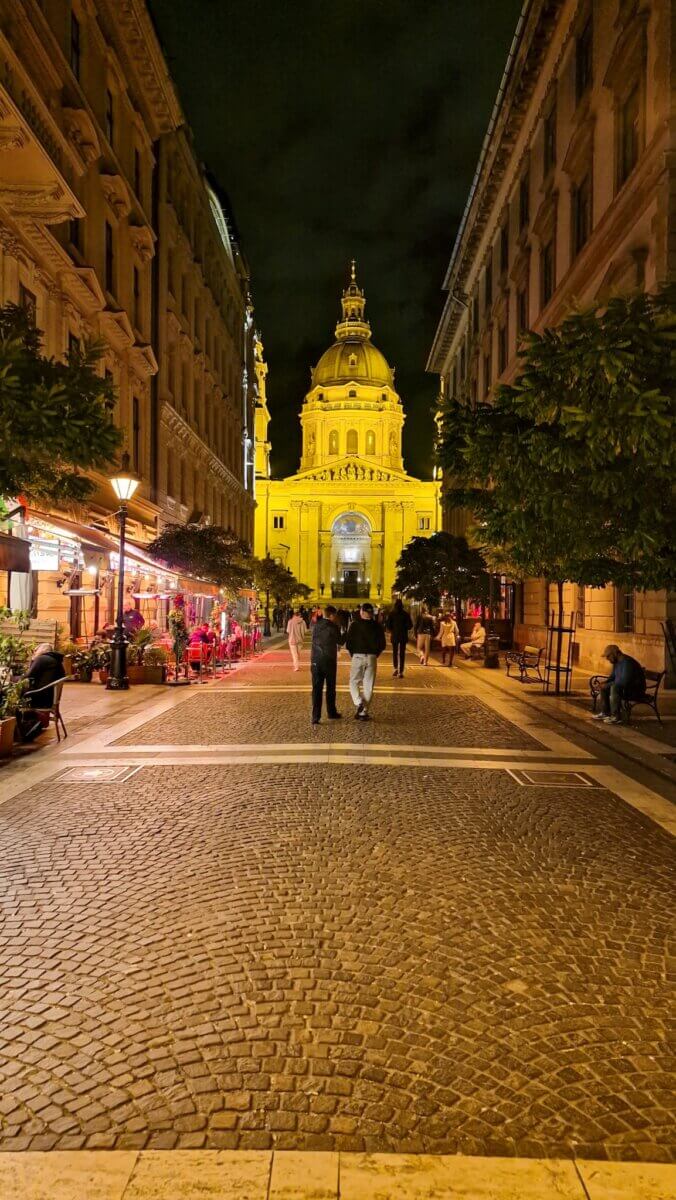
3. Budapest Public Transport Tips and Best Tram Routes
The public transport was fantastic. There are buses, trams, metros, and yellow taxis (which we found a bit expensive). Companies like Uber and Bolt, which is a budget friendly version of Uber, also operate in Budapest.
Budapest’s metro system is easy to use. The yellow M1 line is the oldest in continental Europe and runs under Andrássy Avenue from the city center to Heroes’ Square. Perfect for sightseeing. The red M2 line connects Buda and Pest, stopping near Deák Ferenc tér and Kossuth Lajos tér for the Parliament. The blue M3 line runs north–south across the city, great for reaching the airport bus and main train stations. The green M4 line is the newest and fully accessible, connecting Kálvin tér to the Buda side.
When taking the metro, keep in mind that the escalators are very steep, long, and move quickly, which we found slightly terrifying since we have vertigo. Some newer stations, like those on the M4 line, have elevators and stairs, but most of the older stations only have these long escalators.
For trams, the most scenic is Tram 2, which runs along the Pest riverbank. It passes the Parliament, Chain Bridge, Buda Castle (across the river), and the Central Market Hall, making it a perfect budget-friendly sightseeing route. Trams 4 and 6 are the main cross-city lines (busy but useful) running through the heart of Pest day and night.
A single-ride ticket for trams, metros and buses costs HUF 500 (~1.24€). We highly recommend getting a 24h unlimited travelcard for HUF 2,750 (around 7€) or a block of 10 single-ride tickets costs HUF 4,500 (around 10€).
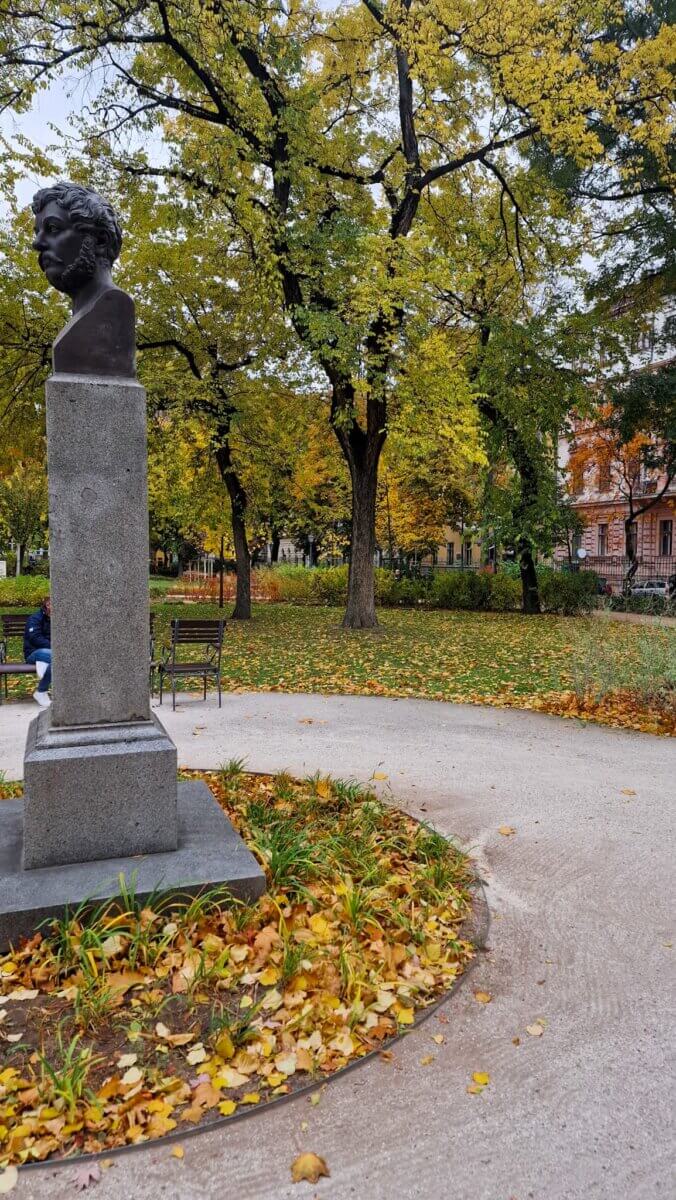
4. Top Things to Do in Budapest: Attractions and Activities
These are activities and attractions you can do so you can pick and choose what to fit into your itinerary and which to skip. At the end, we’ll give you an idea of a great three-day itinerary, but of course, you can adjust it to your liking since everyone travels differently.
Hungarian Parliament Building
The most beautiful building, in our opinion, was the Budapest Parliament. It’s one of the largest in Europe. If you’re interested, you can also visit the inside of the Parliament. There are guided tours that take you through its gold-lined halls and the Crown Jewels. We didn’t have time to do this, but it’s definitely worth considering.
Budapest River Cruise on the Danube River
It’s especially stunning at night from the outside, and the best view is from the riverboat. We booked the river cruise ahead of time on GetYourGuide. The one we booked included a free glass of prosecco, which was delicious. We went in the evening, and since it was late October, it was already dark by 17:30, so that’s the time we booked to see the Parliament and Chain Bridge all lit up.
The cruise left right on time, so make sure to arrive early to collect your tickets. It wasn’t too cold on the boat. We wore coats, but nothing heavy. If you’re on a budget, earlier slots can be cheaper, starting from around 8 euros. We paid 17 euros for the evening ride and it takes 50 mins. Alternatively, as I mentioned previously, Tram 2 goes right by the river and passes many of the same landmarks, so it’s a great low-cost option.

St. Stephen’s Basilica
The Basilica is the most beautiful one we’ve ever seen. It’s dedicated to Hungary’s first king, St. Stephen, and inside you’ll even find his mummified right hand on display. The entrance is stunning and the details are phenomenal. This is the one place you absolutely cannot miss. For the main Church hall, tickets cost 8 euros, and there are options to visit the panoramic terrace, which is what we did, or join a guided tour. To reach the terrace, there are about 360 steps, but there’s also an elevator. The first elevator takes you halfway up and the second to the top. If it’s busy, taking the steps can actually be faster. The view is incredible.
How to book tickets online in Budapest
When you book tickets for attractions like the Basilica or riverboat online, specifically GetYourGuide, you often have to print them or exchange your voucher for a physical ticket before entry. The Basilica ticket office is across the road, and the one for the boat is in a light yellow building right by the dock. It’s not a big inconvenience, but keep in mind it adds some waiting time. We went in late October, so there weren’t many crowds, but in busier seasons, plan ahead. Many attractions still use older systems that can’t scan third-party digital codes, so GetYourGuide and similar sites give you digital vouchers instead of the actual entry ticket.
Hungarian Opera House
The Opera House Budapest on Andrássy Avenue is a masterpiece of Neo-Renaissance architecture. It’s smaller than some of Europe’s grandest opera houses but beautifully ornate. You can take guided tours during the day or attend a performance at night. We didn’t go inside but did visit the main foyer, which was stunning. The interior looks out of this world, similar to the Vienna Opera House.
Right across from it is the Opera metro station, which is absolutely beautiful. The platform is tiled with vintage design. It honestly looks like something out of Harry Potter. We were also surprised by how clean and well-kept all the metro stations were.
University Library
Another thing we did was visiting the University Library, one of the oldest and most beautiful in Budapest. The staff were extremely kind and spoke great English. In fact, we found English widely spoken throughout the city, so no worries if you don’t speak Hungarian. The library itself is gorgeous, and you walk through it with an audio guide on a tablet (only available in English and Hungarian), right among the students studying. It’s quite funny, but they don’t seem to mind. Definitely worth checking out.

Fisherman’s Bastion
Across the river in Buda, Fisherman’s Bastion looks like something from a fairytale with its towers and terraces overlooking the Danube. It was built in the late 1800s as a decorative lookout, not a fortress, and gives one of the most iconic views of the Parliament. The upper terraces have a small fee, but most of it is free to explore.
To get up there, the Budavári Funicular runs from the Chain Bridge, in Clark Ádam Square, to Buda Castle Hill. It’s short, only 95 seconds, and runs ever 5 to 10 mins. It costs approximately 12€ for adults, 6€ for children.
Dohány Street Synagogue
Budapest also has a rich Jewish heritage. The Jewish Quarter is home to active synagogues like the Dohány Street Synagogue, the largest in Europe. Inside, you’ll find the Jewish Museum and the Holocaust Memorial shaped like a weeping willow engraved with victims’ names. It’s absolutely beautiful and worth seeing.
5. Best Restaurants and Food in Budapest
We highly suggest booking a table at the restaurants you want to visit in advance, even during the week in shoulder season, as they fill up quickly.
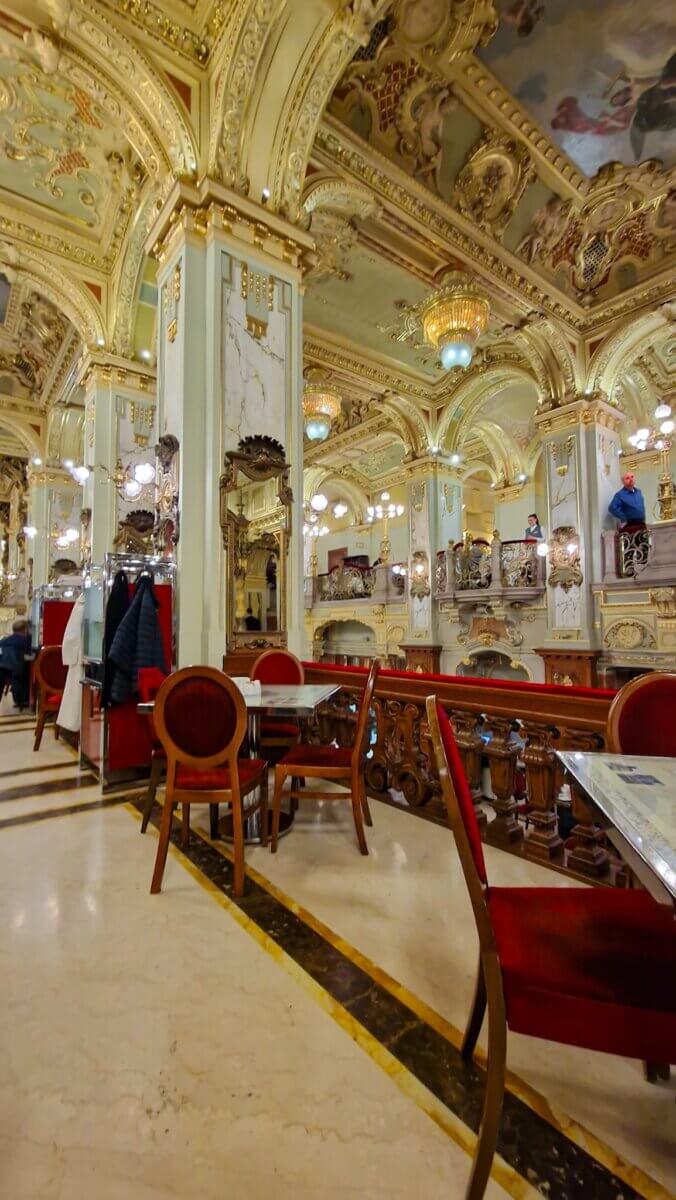
New York Cafe Budapest
At New York Café Budapest, housed by the famous Anantara New York Palace Budapest Hotel since 1894, not all sections are always open. So, even if it looks like there are tables available, there might not be. You can book directly on their website. The architecture is inspired by the Haussmann style in Paris. You’ll see a lot of it in Budapest thanks to Count Gyula Andrássy, who brought Parisian-style boulevards and buildings to the city.
We had Goulash soup (a hearty, paprika-based soup made with beef, potatoes, carrots, onions, and sometimes small pasta called csipetke) and sour cabbage soup with spiced sausage that tasted similar to chorizo—rich, warm, and delicious. For dessert, we tried the bread pudding, which wasn’t our favorite, but the meringue on top was great.
Overall, this restaurant is a must. The decor is breathtaking, and there was even a pianist and violinist playing nearby, which really added to the vibe. Keep in mind when making a reservation you have to spend at least 30 euros per person for dinner.
Time Out Market Budapest
Time Out Market Budapest is also worth visiting for the vibe. They have locations all over the world in Barcelona, Porto, New York, Cape Town… but we found it a bit expensive for that kind of concept without table service. Still, the food quality was great. There was food from all over the world, but we wanted typical Hungarian food, so we chose Canteen by Pesti István.
We had the schnitzel with potato salad and duck with warm cabbage, both traditional Hungarian dishes. For dessert, we had Kaiserschmarrn, an Austrian-Hungarian shredded pancake served with apricot jam and cream custard. It was so good!
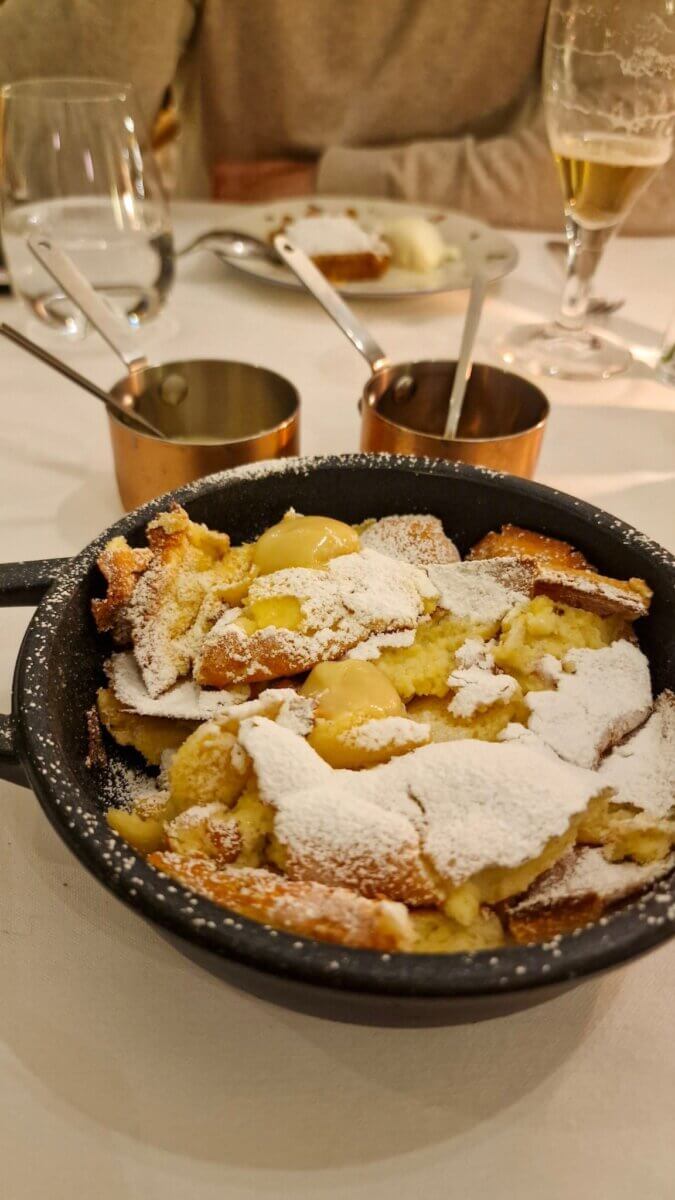
Chimney Cake
You simply have to try chimney cake! We went to a place called Pilcher, which has several locations in the city. They make them fresh in front of you, rolling the dough around a stick that slowly turns while baking. You can choose from lots of toppings like Nutella, pistachio cream, or ice cream (like the apricot and ricotta flavour), but honestly, the plain version with vanilla sugar we tried was absolutely perfect as is. They’re big, delicious, and totally worth it.
Café Gerbeaud Budapest
We visited Gerbeaud Café, a beautiful spot similar in style to Ladurée in Paris. We tried the famous Dobos cake, which has thin sponge layers with chocolate buttercream and caramel on top. The decor is lovely. We don’t recommend the gin and tonic with apricot liqueur, we tried it and didn’t love the taste, but the cakes were worth it.
Lui Budapest (Lui Bakery) is another great find. It’s elegant and relaxed, with tables inside, as well as upstairs and outside, with tree-lined streets and beautiful buildings. We had the quiche, which was really good and filling, and the cardamom bun, and pain au chocolat—both delicious. The service was excellent and the staff were very kind.
Strudel House Budapest
Another great spot is the Strudel House Budapest. They make both savory and sweet strudels right in front of you. We had duck with potato strudel and sweet purple cabbage, plus the chicken one with creamy rice. For dessert, we had apple strudel and raspberry cheese curd strudel with salted caramel and whipped cream—so good. Definitely book ahead; it’s popular.
Ida Bistrot
We went to Ida Bistrot, just below Fisherman’s Bastion. It’s a lovely, sophisticated restaurant. We ordered the crumb pork served with peas and rice, as well as cranberry jam. For dessert we had apple tarte and Kaiserschmarrn, served with apricot jam and apple sauce. It was delicious.
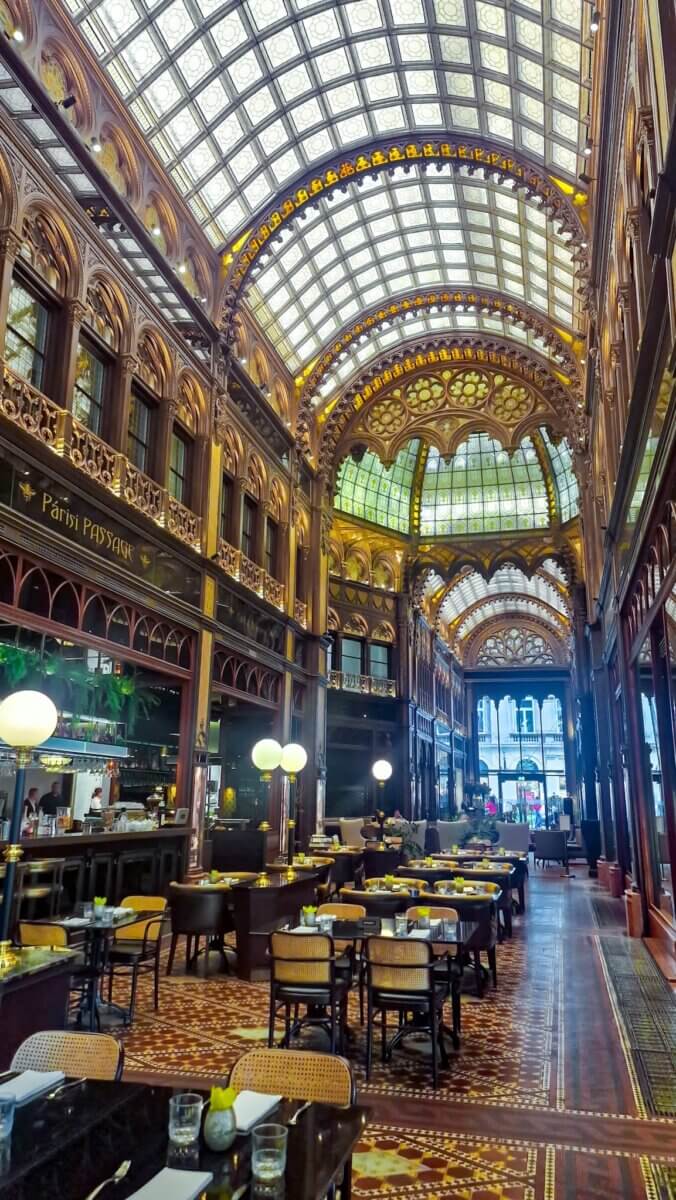
Parisi Passage Cafe
On our last day, we went to Parisi Udvar, a stunning hotel where we had breakfast in the café area, called Parisi Passage Cafe, while listening to live violin music. We had the eggs benedict, and the belgian waffle, both were good. Breakfast is only served until 12.
Try Palinka Liqueur
Lastly, try the local liqueur called Palinka, made with different fruits, or take a bottle home like we did from a gift shop. We chose the apricot one, but they also make grape and plum versions. It’s 50% alcohol, so it’s meant to be mixed, not drunk on its own. It’s perfect for adding to cocktails for Christmas or Thanksgiving dinner parties. At the same giftstore, we picked up a porcelain hand painted ornament, which we love doing on our trips. We always try to get an ornament for our tree and a magnet for our fridge.
6. 3-Day Itinerary
Here’s a simple itinerary that fits well with travel times and distances. You can easily change it up to match what you want to see, this is just a helpful starting point.
Day 1
Start your morning with breakfast at Lui Bakery, then head over to the Basilica. After visiting the Basilica. In the afternoon, grab lunch at Time Out Market and then visit the Dohány Street Synagogue, try a traditional chimney cake at Pichler. For the evening, take a river cruise so you can see the Parliament lit up at night, and finish with dinner at Strudel House.
Day 2
Begin the day with breakfast at Café Gerbeaud before visiting the University Library. In the afternoon, make your way to Fisherman’s Bastion and then stop for lunch at Ida Bistrot. In the evening, visit the Hungarian Opera House and have dinner at the New York Café.
Day 3
Start your morning at Parisi Passage Café, then visit the Hungarian National Museum. In the afternoon, explore the Central Market Hall and have lunch there. And to wrap up your trip, take an evening walk along the river toward the Chain Bridge and have dinner at one of the restaurants near the bridge.

7. Where to Stay in Budapest: Best Areas and Tips
Depending on your budget and preferences, different districts offer different perks. District V (Belváros-Lipótváros) is the best for first-time visitors—it’s central and close to the Parliament, Basilica, and Danube promenade, though pricier. District VI (Terézváros) is nearby and offers a quieter stay close to cafés, shops, and Andrássy Avenue. District I (Castle District) on the Buda side is perfect for longer, more relaxed stays. For more local, budget-friendly options, District VIII (Józsefváros) and IX (Ferencváros) offer great value and are well-connected.
If you’re searching online, you’ll often see listings for Budapest accommodation, Booking.com Budapest, and lots of apartments with great ratings depending on the area you choose.

8. Best Hotels in Budapest – Where to Stay
Where we stayed (medium to low budget)…
We stayed on the edge of the Jewish Quarter, which was super walkable and great value. The apartment (view it here) was clean, beautifully decorated, and the host was friendly. It was also close to New York Café (about a 9-minute walk) and Time Out Market (about 2 minutes). Next time, we might stay closer to the river, but this area was so convenient, with buses, metros and trams that went directly to the main attractions.
If you’re feeling splurgy…
Four Seasons Budapest – The Four Seasons Hotel Gresham Palace in Budapest is a luxury hotel in a beautiful historic building right by the Chain Bridge. It has stylish rooms, great service, and amazing views of the Danube.
Bagatelle Gardenhouse – Bagatelle Gardenhouse in Budapest offers a modern and romantic restaurant, a beautiful garden, and a terrace. Guests enjoy free WiFi, private check-in and check-out, and a concierge service.
Final Thoughts: Is Budapest Worth Visiting?
In conclusion, we highly recommend visiting Budapest, especially if you love Parisian-style architecture and old-time charm. It offers many accommodation options for every budget, the transport system is easy and reliable, and English is widely spoken. The food and service are amazing, just make sure to book restaurants in advance. And when booking activities, print your tickets or go early to exchange them for physical ones.
If you’re wondering about the best time to visit Budapest, or the best month to visit Budapest, we visited during late October and absolutely loved autumn in Budapest. The weather was cool, but not too cold, the colours were beautiful, and the crowds were low. Many people say September and October are the best months to visit and it we can vouche for that.
Leave a Reply